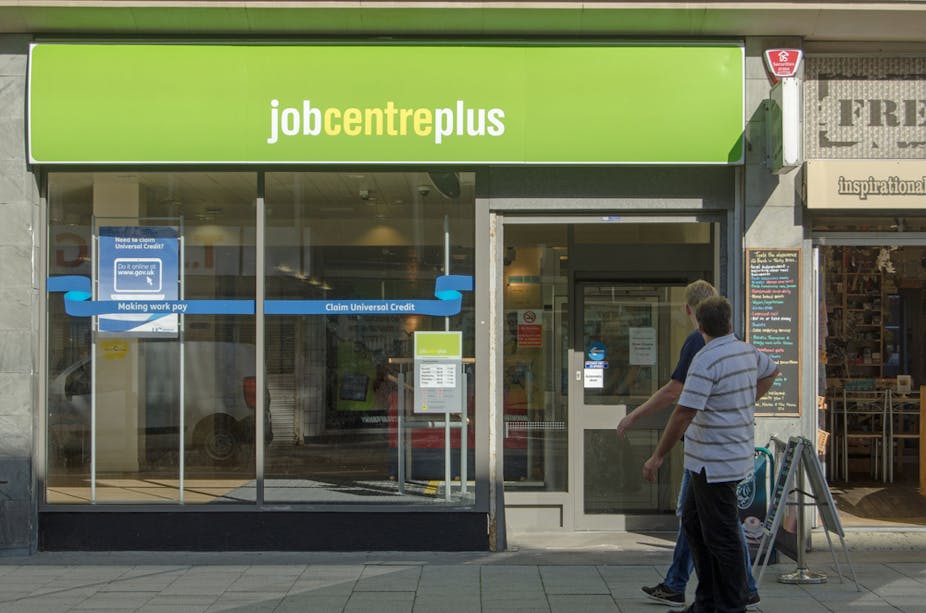Without us knowing, our brains are busy making associations. While on the surface we may sincerely believe that men and women are equal, or that people on benefits are just regular folks who happen to need help, our unconscious minds might not be so progressive. In psychology, ideas that we hold unconsciously are called “implicit attitudes”.
Implicit attitudes develop under the influence of the world around us. Immerse your brain in a culture that routinely represents women as emotional and irrational, or in which black men are habitually portrayed as aggressive and criminal, and it will develop those associations whether you want it to or not.
This can happen even if you are part of the maligned group yourself. It is these unconscious associations that can – for example – lead a police officer to view a black suspect as more threatening than a white one.
A great deal of valuable research has been done into people’s implicit attitudes towards women and people of colour. However, there are many other groups which society also tends to represent in negative, stereotyped ways. A particular target in the UK are unemployed people who receive government benefits.
Described in newspaper headlines as “dossers” and “layabouts” (The Sun), “scroungers” (The Daily Mail), and “skivers” (The Express) benefit claimants are treated with unremitting hostility by large sections of British society. It is easy to see how exposure and immersion in this culture could lead to the development of negative unconscious feelings towards this group. This is the idea I set out to test with my new research.
Testing our associations
How do you find out if someone harbours negative implicit attitudes towards benefit claimants? The very fact that these attitudes are not conscious means you can’t just ask them directly. To get around this problem, psychologists have developed a set of tools called implicit association tests.
In my research, I used a specific test called the Go/No-Go Association Task, or GNAT. The easiest way to describe how this works is by way of an example. Imagine you are sat in front of a black screen. At the top of the screen some white text reads “spiders and negative words”. Words will now appear and disappear rapidly in the centre of the screen.
As each word appears, your job is to decide if it fits into the category of “Spiders and negative words”. If it does, you press the space bar (“Go”). If it doesn’t, you don’t press anything (“No-Go”). So, for example, if you saw the words “tarantula” or “disgusting” you would press the space bar. If you saw the words “wonderful” or “glasses”, you wouldn’t.
Once you’ve finished going through 60 words or so, the text at the top of the screen changes. It now says “spiders and positive words”. Now if you saw the word “tarantula” or the word “wonderful”, you should press the space bar. If you saw the word “disgusting”, you shouldn’t.

Because most people feel negatively about spiders, they will find it more difficult to group them together with positive words than they will to group them with positive words. Because the words appear and disappear so quickly, people don’t have time to deliberate. Their responses are dominated by their unconscious feelings. You can get a feel for this by trying some implicit attitude tests on a website run by Harvard University.
The principle is exactly the same when we are talking about social groups. For example, study after study has found that people find it much easier to pair photographs of black people with negative words than with positive ones.
Bias against benefit claimants
And when I used this technique to examine unconscious attitudes towards benefit claimants in the UK, I found exactly the same results. Participants found it much easier to group words relating to benefit claimants together with negative words like “bad”, “useless”, and “dirty” than they did to group them together with positive words like “friendly”, “clean”, or “wonderful”. This was true even for people who, when asked directly, did not report having any negative opinions about people on benefits. These results strongly suggest the existence of a negative, unconscious prejudice against this group.
There are of course caveats to this research. My sample was small – only around 100 people. This is a similar sample size to that of most implicit attitude studies. However, 100 people is clearly too few to start drawing conclusions about the British population as a whole. This is particularly true given that all of the participants came from a single town (Oxford), and that many (though not most) were university students.
So this research does not yet demonstrate that negative unconscious attitudes towards benefit claimants are a general feature of the British population. However, if this result proves to be robust, it has significant implications for debates about welfare both in the UK and elsewhere.
If antipathy towards benefit claimants is strongly rooted in people’s unconscious feelings and stereotypes, this profoundly limits the power of facts and figures to change people’s minds about the benefits system. Correcting mistaken beliefs about the benefits system is easy. Severing unconscious negative associations that have developed over decades is likely to be much, much harder.

